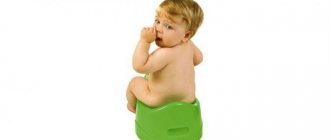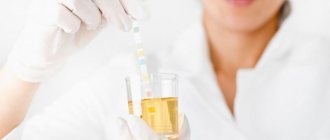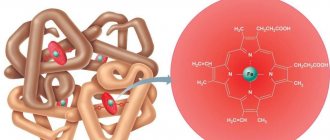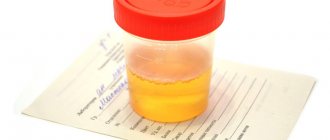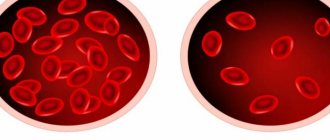The mobile Internet audience is growing rapidly
66 million Russian users use it along with desktop, and 20 million already access the Internet only from mobile devices - this is 15% more than a year ago.
Pages on smartphones may load slowly
There are several reasons: an unstable network connection, low Internet speed, or the site is not adapted for mobile devices. If you have to wait too long, users will move to other sites.
We offer users Turbo technology
It significantly speeds up the loading of text, images and videos on smartphones and helps save time and megabytes of mobile Internet.
Monetization
Yandex Advertising Network
RTB blocks can display ads from tens of thousands of Yandex advertisers. It is convenient to manage blocks from the partner interface: among them is the popular and profitable Motion.
Direct advertising sales
Manage direct advertiser campaigns through ADFOX or other services.
Business model combinations
Using ADFOX, you can transfer impressions that were not purchased by direct advertisers to YAN, as well as compare the rates of all monetizers in Dynamic monetization.
Increased specific gravity of urine - where does it come from?
Increased specific gravity of urine may be due to too low fluid intake. Therefore, it is very important to optimize the consumption of drinks before the study so that insufficient quantities do not distort the results.
However, if an undeniably high urine specific gravity is obtained, this may indicate glycosuria or heart failure . This concentration also occurs during chronic and high fever, during diarrhea and when the person being studied takes certain medications, such as dextran.
Excessive specific gravity of urine during pregnancy may indicate the above-mentioned painful conditions - however, it should be emphasized that this is rare.
Development plan
- Support for multimedia content (illustrations, videos)
- Support for third party ad networks via ADFOX
- Support for third-party analytics counters (Google Analytics, Mail.Ru, Rambler Top 100, Mediascope)
- Speed up loading Turbo pages by 4 times
- Tables, lists, quotes
- Image and photo galleries
- Displaying comments
- Embed codes for content from YouTube, Vimeo, Instagram, Twitter
- “Endless” feed (block “You may be interested in”)
- Site navigation
- Share button
- Additional advertising spaces
- Advanced analytics capabilities
- Ad rendering speed
- API for publishing content
- Call button, chats and feedback forms
- Support for content embed codes from VKontakte and Odnoklassniki
- Design customization in CSS
- Supports GIF animation and video players
- Editor for debugging Turbo pages
- Rating block
- Media content gallery with slider
- Quickly view a larger image by clicking
- Content block and anchor links
- Sidebar – new menu block
- Additional design types for the “You may be interested in” block
- Support for embedded content from Yandex.Maps and Yandex.Music
- Search form - on your website or with sending a request to search engines
- Impressions of new pages in Turbo format when following links from Turbo pages
- Product cards for online stores
- More statistics in Metrica and the ability to use goals
- Video in Turbo
- New page types
- Poll block
- Advertising optimization - new formats
- The ability to place a product on Turbo pages in one click so that the user does not leave the accelerated version of the store
- Custom blocks
- Authorization
- Possibility to leave a comment
- Advanced features of Metrica
- Feedback from webmasters
Expanded appearance customization options
We have started testing the display of elements created by site owners.
For example, Turbo pages can have complex interactive components using JavaScript, such as diagrams of the placement of chess pieces or players on the field. But there should be more tools that allow you to flexibly customize Turbo pages - and we, of course, will continue to add them. Please tell us what kind of customization is required for the Turbo pages of your website - leave your contacts in this form, and a specialist from the development team will contact you to clarify the details.New opportunities for online stores
Online payment and shopping cart will appear in the e-commerce arsenal. Moreover, in the Turbo version of the store you will be able to make purchases directly from the list of products, and after going to the cart, select delivery options. We will add the ability to pre-fill fields (for example, name or contacts) to the order form - if the site visitor is authorized in his Yandex account. It will become more convenient and easier for users to interact with the Turbo version of the store - there will be fewer failures and more conversions.
Advanced analytics in Yandex.Metrica
The Metrics Webvisor tool will help you analyze in detail the behavior of visitors to Turbo pages.
It records the actions of visitors on the site and shows them in video format - this way you can identify problems in navigation, logic and usability, and as a result, increase site conversion. Metrica will also feature new reports to analyze the effectiveness of the Turbo version of online stores.New blocks and widgets on Turbo pages
By the end of the year, Turbo pages will have:
a multi-level menu,- customizable dynamic forms,
- Apester platform embeds for surveys and quizzes,
- cards for grouping content on a page,
- possibility of fixing the site header,
- Scrolling support when viewing an image gallery,
- “Expand” button to view articles on the desktop,
- “breadcrumbs” to facilitate navigation on the site,
- opportunity to comment on articles.
And new widgets - including Market and Zen widgets
- will increase traffic and expand the site’s audience.
New advertising formats and optimization opportunities
- will appear with a parallax effect
, which will be placed under the site content. The content of such an ad unit appears from underneath the content as the user scrolls the page. The advertisement begins to appear smoothly from the bottom of the banner, and when scrolling, it gradually opens, after which it is just as smoothly and neatly hidden under the content.
Fixed horizontal sticky blocks.
for Turbo pages. This is a new tool for A/B testing of advertising designs with automatic selection of the most profitable option for each site visitor, which is currently undergoing closed beta testing. It will allow you to choose the optimal design of contextual advertising for a specific site.
on Turbo pages, we optimize advertising placements and other parameters so that auto placement brings you more income.
Norms for adults and children
The total volume of fluid involved in metabolic processes is not a constant value. Factors such as:
- air temperature;
- drinking regime;
- current time of day;
- the presence of salty or spicy foods on the menu;
- the amount of fluid released by sweating and breathing.
However, normally in an adult, variations should fall within the range of 1.014-1.025 g/liter (normosthenuria).
During pregnancy, the range of daily values can be wider - 1.003-1.035. The reasons for this are partly toxicosis, nausea and vomiting, which causes dehydration.
If there is a deviation of the indicator (in the analysis form –), the following is distinguished:
- isosthenuria – SG fluctuations within limited limits – 1.010-1.012;
- hyposthenuria – decrease in SG less than 1.010 (1.008);
- hypersthenuria – increase in SG to 1.025 (1.030) and higher.
An increase in density can also be initiated by factors such as:
- presence of sugar in the blood – 1% per 0.004 g/liter;
- the presence of protein in urine - 3 g/liter of protein corresponds to an increase in SG by 0.001.
Normal specific gravity values for children can be summarized in the table:
| Child's age | Normal limits, g/liter |
| from 1 to 10 days | 1,008-1,018 |
| up to 6 months | 1,002-1,004 |
| up to 1 year | 1,006-1,016 |
| 2-3 years | 1,010-1,017 |
| 4-5 years | 1,012-1,020 |
| 7-8 years | 1,008-1,022 |
| 10-12 years | 1,010-1,025 |
In general, a specific gravity value of 1.020 g/liter is above the norm for children.
To improve your appearance
Support for Turbo pages on a wider class of mobile screens - so that your Turbo pages look equally good not only on mobile, but also on tablets.
Transferring html layout directly to RSS. To make it more convenient for you to work with the appearance of Turbo pages, we will add the ability to transfer your own html layout directly to RSS. It will be possible to transfer ready-made blocks of your website to the Turbo page practically without changes and not waste time re-configuring the appearance.
Settings for basic design elements without CSS. And so that you can save time on developing your own CSS, let's add the following features:
- customize color, font, logo and other elements directly in Webmaster,
- quickly enable light and dark themes on your website.
When is urine specific gravity assessed?
A general urine test should be carried out prophylactically once a year . Urine specific gravity testing is recommended for: pregnant women, people with diabetes, hypertension, jaundice and urinary tract diseases, and those with relatively low or high sodium concentration in the blood.
To be reliable, a urine test should be performed on an empty stomach . The last meal should be consumed no later than 18:00 the previous day, and liquids should not be consumed for 8 hours before taking the sample.
The examination should not be carried out during menstruation. In addition, on the day before it you should avoid eating beets, berries, rhubarb, etc., because they change the color of the urine.
To obtain the sample correctly, you must prepare in advance a special container purchased from a pharmacy . Before donating urine, you should rinse the area around the urethral opening with water. Then a small amount of urine should be put into the toilet, and only then into a container. The prepared sample should be delivered to the laboratory within an hour.
To engage the audience
Recommendation widget - a block with personalized content for your audience can be added to the Turbo page. This widget is already available to partners of the Advertising Network - it helps to increase the number of transitions to the site and the depth of views.
Improved automatic recommendation feed. The feed has proven to be an excellent tool for increasing user engagement, and we will continue to improve its effectiveness.
Working with comments - the ability to monitor the list of articles on which the latest comments appeared, as well as turn comments on and off separately for specific articles.
The specific gravity of urine is below normal - reasons
The specific gravity of urine below normal may be a consequence of drinking water before the test. Therefore, you should remember this and optimize your fluid intake before submitting the sample to the laboratory .
If, despite this, the specific gravity of the urine is low, this may indicate painful conditions. May indicate, for example, glomerular or interstitial nephritis (renal failure or impaired renal function), diabetes mellitus or thyroid dysfunction (underfunction, hyperfunction), as well as indicate electrolyte or hormonal imbalances.
In rare cases, decreased urine specific gravity indicates severe kidney infections . This condition also occurs during pregnancy. Most often this is not alarming, as this may be due to increased fluid intake. A pregnant woman takes them as much as possible; if, for example, she previously drank 2 liters per day, then during pregnancy the consumption is 3 liters per day. Therefore, low urine specific gravity very rarely indicates kidney disease during pregnancy (although it is possible).
Deviation from normal indicators
There are two types of changes in this indicator. 1. Specific gravity exceeds the norm. An increase in the concentration of urine is a consequence of certain processes of a pathological nature.
- Increasing edema occurs, which is caused by glomerulonephritis or insufficient renal function.
- Various pathologies of hormonal origin.
- Excessive loss of fluid from the body due to burns, vomiting, diarrhea, and blood loss.
- Damage to abdominal organs and intestinal obstruction.
- Vomiting in pregnant women.
- High doses of antibiotics.
- Kidney pathologies of an acute or chronic nature.
There are many factors that increase the density of urine. These may be metabolic disorders or diseases of the reproductive and urinary apparatus. This phenomenon can also be observed with physiological changes - increased sweating and thirst after eating salt. Oddly enough, the increased specific gravity of urine has its own clear manifestations
- The volume of urine is reduced.
- Urine has a darker color.
- The smell of urine is quite unpleasant.
- The appearance of edema is noted.
- The patient begins to experience swelling.
- The patient is weak, drowsy and prone to getting tired quickly.
- Pain in the lower back and abdomen is common.
In children, increased density may occur due to the presence of pathologies that are congenital or acquired. Very often, children are affected by intestinal infections due to weak immunity, and in case of poisoning, as is known, a lot of fluid is lost. You can separately consider diabetes mellitus, in which an increase in the weight of urine is based on the high content of sugars in it. Or if there is protein and breakdown products in the urine. Urine will be denser. To identify any such pathology, certain tests must be carried out.
2. Decrease in relative density Sometimes, after any illness, the doctor recommends that the patient consume more water and other drinks to quickly remove toxins and replenish fluid balance. Such replenishment will most likely reduce the concentration of dry sediment and dilute the urine; such dilution is physiological in nature. It is also considered normal for a decrease in urine concentration in the heat, when a person drinks a lot, or when taking diuretics. There are a number of reasons that cause pathological dilution.
- Neurogenic diabetes, characterized by a decrease in the synthesis of pituitary hormones.
- Nephrogenic diabetes, which occurs when nephron cells become tolerant to antidiuretic hormone.
- Diabetes that occurs during pregnancy.
- Nervous disorders due to stress and depression.
- Inflammation of the kidney tubules.
The condition of reduced density (hyposthenuria) requires diagnostic measures, as it can have quite serious causes. For further diagnosis, it is necessary to prescribe tests that determine exactly the functional component. Zimnitsky test, carried out in drinking mode and concentration test. It is worth remembering that if the change in night density is permanent, you need to urgently consult a doctor who will help you deal with the problem and find its cause.
Density reduced
- Polyuria (frequent urination) with heavy fluid intake;
- Polyuria due to taking diuretics;
- Nutritional dystrophy (hyposthenuria is temporary);
- Interstitial nephritis (inflammation of the kidney tubules) in chronic and acute form;
- Glomerulonephritis, pyelonephritis in acute and chronic form;
- Other kidney diseases: nephritis;
- amyloidosis;
- cysts;
- nephrosclerosis (replacement of kidney connective tissue);
- oncological processes;
Carrying out analysis
Determination of density is carried out using a urometer apparatus. Urine along the wall is placed in a special cylinder; if the process is accompanied by the appearance of foam, then it must be removed. The entire cylinder is placed in the device. It should be noted that if the patient cannot go to the toilet himself, then urine must be collected with a catheter. The density is determined by the level of the underlying meniscus of the apparatus scale; therefore, the cylinder and the apparatus should not be in contact. There are situations when the volume of urine obtained is too small, then it is diluted with distilled water and all calculations are made taking into account the degree of dilution. And so, when diagnosing using this method, qualitative and quantitative indicators are taken into account. A mixture of chloroform and benzene is placed in a cylinder, and a drop of the test liquid is dropped into it. If she drowned, then the urine density is too high, if she floated, then it is low. By adding each of the components in parts, they ensure that the material under study is in the middle of the liquids. The density of the urine will be equal to the density of the resulting solution. It is worth remembering that the urometer was calibrated at 15 C, which means that it is necessary to make an adjustment for the ambient temperature. At high temperatures, a person always drinks more and loses more fluid, and at low temperatures, he consumes very little fluid. All this, of course, influences, and daily changes in density.


